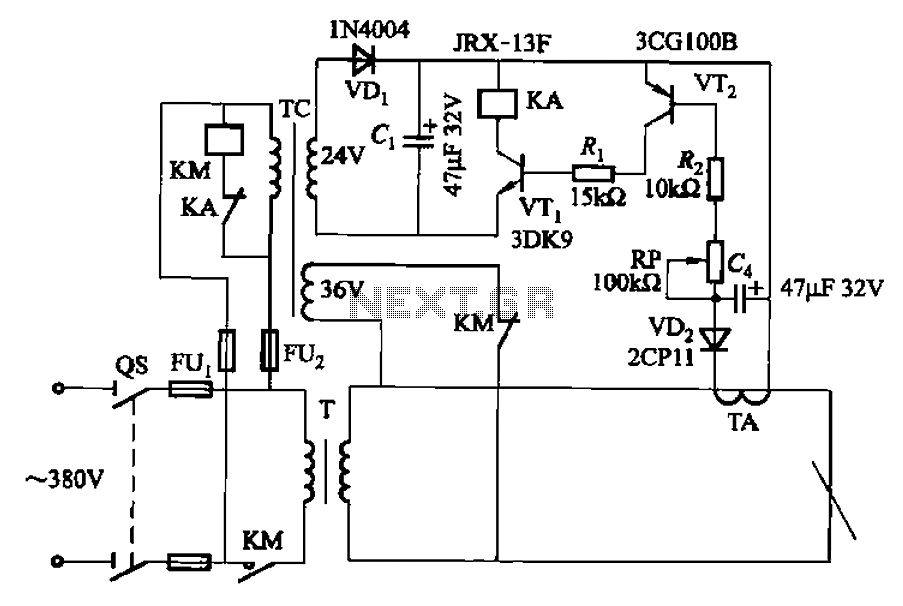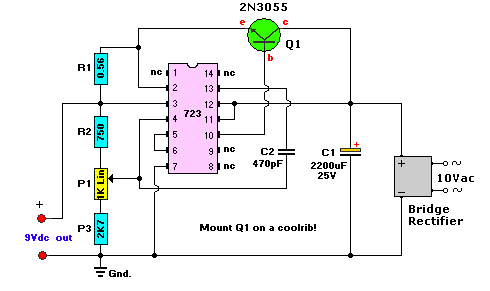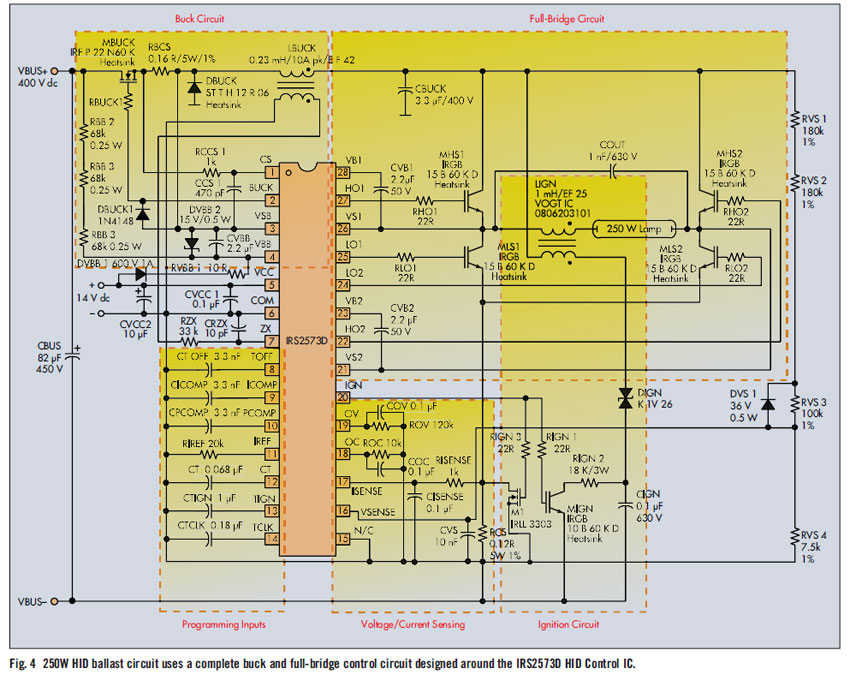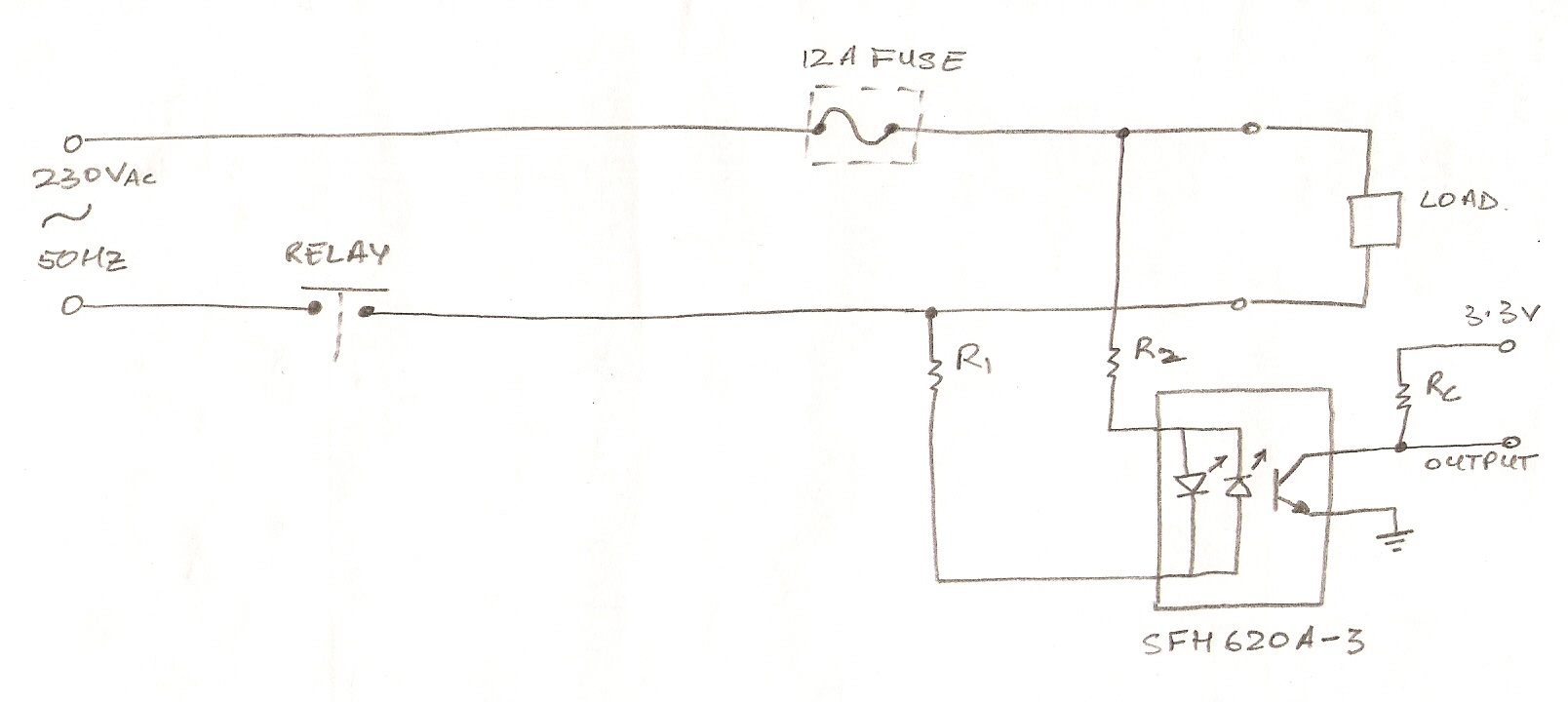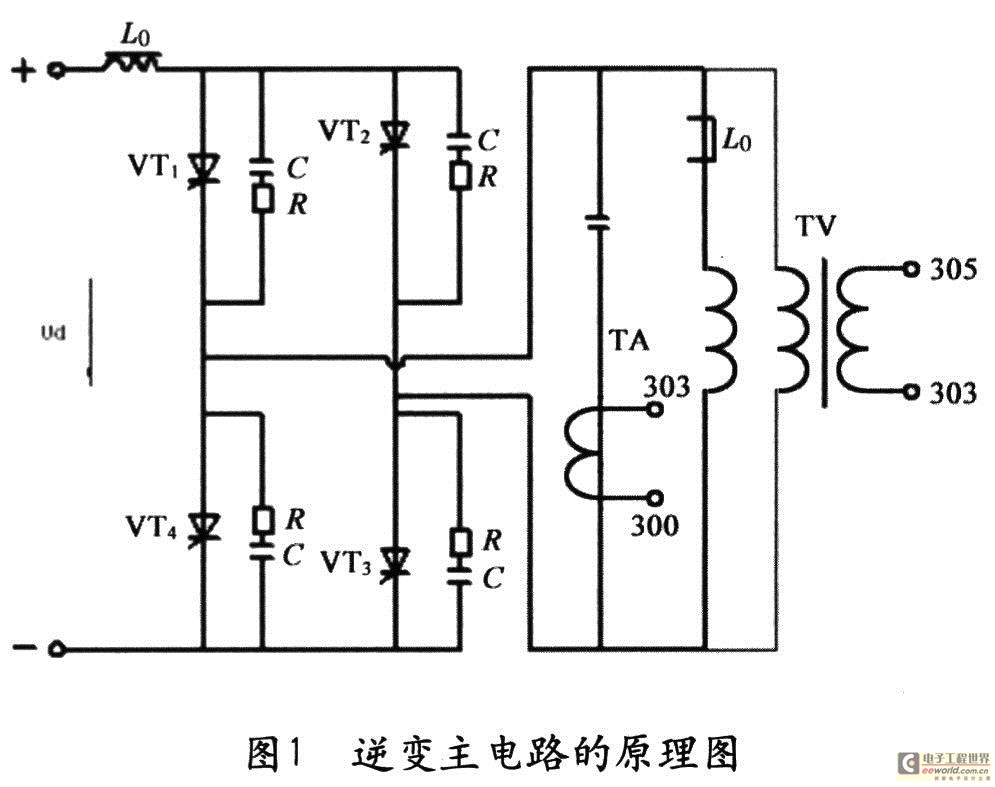
Power supply for 25-watt arc lamp
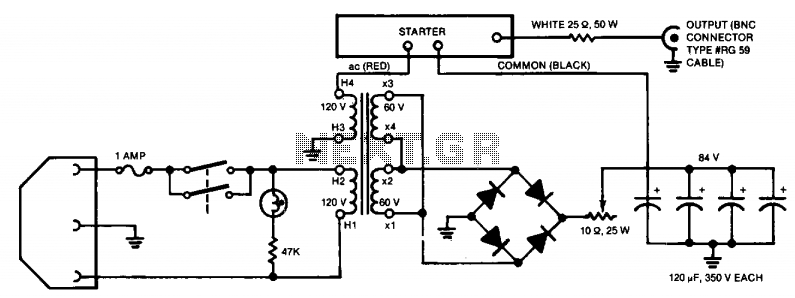
A dual-voltage circuit both initiates and sustains the arc. The lamps necessitate a starting voltage exceeding 1,000 volts. Once stable, the voltage across the lamp is approximately 20 volts. The power supply is divided into two primary sections. The first section is a low-voltage power supply providing 84 volts of direct current, which powers the stabilized arc. Current is limited by a combination of a 10-ohm adjustable resistor and a 25-ohm fixed resistor. The second section is a high-voltage starter circuit, utilizing a Cockcroft-Walton voltage multiplier. Without a load, the output voltage reaches 2,036 volts. However, once the arc is established, the significant current draw maintains a forward bias on all diodes, converting the circuit into a direct path with a voltage drop of 7.2 volts. The small capacitance values of the capacitors in the multiplier ensure that the diodes remain forward-biased once the arc is established.
The described dual-voltage circuit operates by combining two distinct power supply sections to achieve both the initiation and maintenance of an electrical arc necessary for lamp operation. The low-voltage section, which outputs 84 volts of direct current, is crucial for sustaining the arc after it has been initiated. This section incorporates a current-limiting mechanism, achieved through an adjustable 10-ohm resistor in conjunction with a fixed 25-ohm resistor. These resistors help manage the current flow to prevent damage to the components while ensuring that the arc remains stable.
The high-voltage section employs a Cockcroft-Walton voltage multiplier, which is designed to step up the voltage significantly. In the absence of load conditions, this multiplier can generate an output voltage of 2,036 volts, which is essential for overcoming the initial breakdown voltage of the lamp. Once the arc is established, the circuit experiences a heavy current drain, which effectively biases all diodes in the multiplier forward. This condition transforms the circuit into a low-resistance path, resulting in a voltage drop of only 7.2 volts across the circuit.
The design utilizes capacitors with small capacitance values within the multiplier, which play a critical role in ensuring that the diodes remain forward-biased once the arc is initiated. This characteristic is vital for the reliability and stability of the arc, as it allows the circuit to quickly respond to changes in load conditions without interruption. The combined functionality of the low-voltage supply and high-voltage starter circuit exemplifies an efficient approach to managing the complexities of arc initiation and maintenance in high-voltage lamp systems.A dual-voltage circuitry both strikes and maintains the arc. The lamps require a starting voltage in excess of 1,000 volts. Once stabilized, the voltage drop across the lamp is near 20 volts. Power supply consists of two main sections. The first section, the low-voltage power supply section, is an 84-volt direct-current supply. This supply powers the stabilized arc. Current is limited by the 10 ohm adjustable and 25 ohm fixed resistance. The second section, the high-voltage starter circuit, is a Cockroft-Walton voltage multiplier. With no load, the output voltage is 2,036 volts. However, when the arc is established, the heavy current drain maintains a forward bias on all of the diodes, and the circuit becomes a straight path with a voltage drop of 7.2 volts. The small value of the capacitors used in the multiplier guarantees that the diodes will be forward-biased once the arc is established.
The described dual-voltage circuit operates by combining two distinct power supply sections to achieve both the initiation and maintenance of an electrical arc necessary for lamp operation. The low-voltage section, which outputs 84 volts of direct current, is crucial for sustaining the arc after it has been initiated. This section incorporates a current-limiting mechanism, achieved through an adjustable 10-ohm resistor in conjunction with a fixed 25-ohm resistor. These resistors help manage the current flow to prevent damage to the components while ensuring that the arc remains stable.
The high-voltage section employs a Cockcroft-Walton voltage multiplier, which is designed to step up the voltage significantly. In the absence of load conditions, this multiplier can generate an output voltage of 2,036 volts, which is essential for overcoming the initial breakdown voltage of the lamp. Once the arc is established, the circuit experiences a heavy current drain, which effectively biases all diodes in the multiplier forward. This condition transforms the circuit into a low-resistance path, resulting in a voltage drop of only 7.2 volts across the circuit.
The design utilizes capacitors with small capacitance values within the multiplier, which play a critical role in ensuring that the diodes remain forward-biased once the arc is initiated. This characteristic is vital for the reliability and stability of the arc, as it allows the circuit to quickly respond to changes in load conditions without interruption. The combined functionality of the low-voltage supply and high-voltage starter circuit exemplifies an efficient approach to managing the complexities of arc initiation and maintenance in high-voltage lamp systems.A dual-voltage circuitry both strikes and maintains the arc. The lamps require a starting voltage in excess of 1,000 volts. Once stabilized, the voltage drop across the lamp is near 20 volts. Power supply consists of two main sections. The first section, the low-voltage power supply section, is an 84-volt direct-current supply. This supply powers the stabilized arc. Current is limited by the 10 ohm adjustable and 25 ohm fixed resistance. The second section, the high-voltage starter circuit, is a Cockroft-Walton voltage multiplier. With no load, the output voltage is 2,036 volts. However, when the arc is established, the heavy current drain maintains a forward bias on all of the diodes, and the circuit becomes a straight path with a voltage drop of 7.2 volts. The small value of the capacitors used in the multiplier guarantees that the diodes will be forward-biased once the arc is established.
